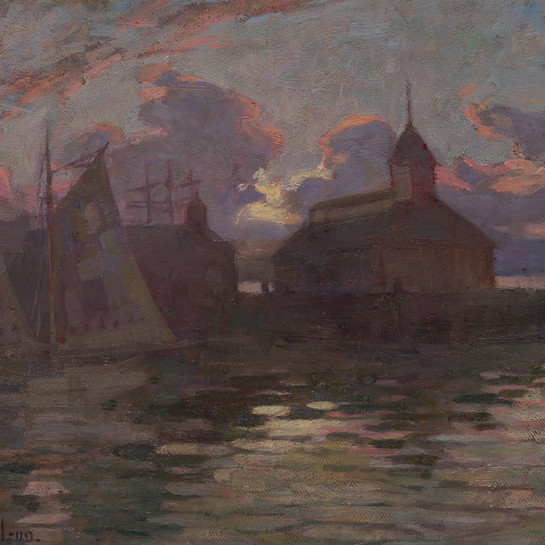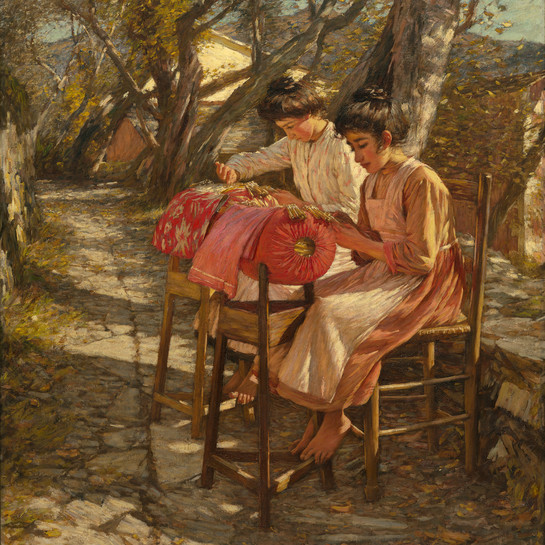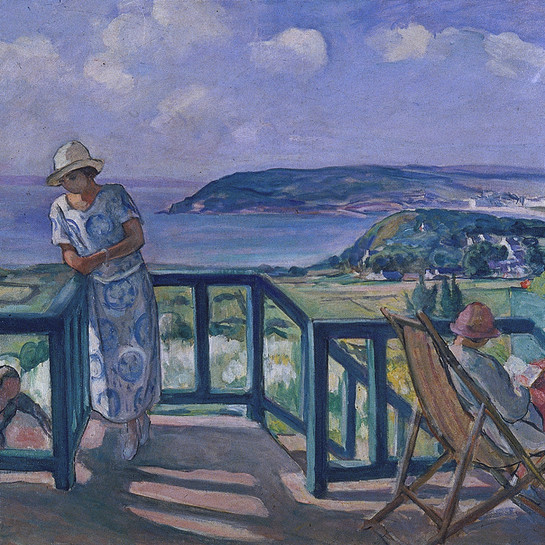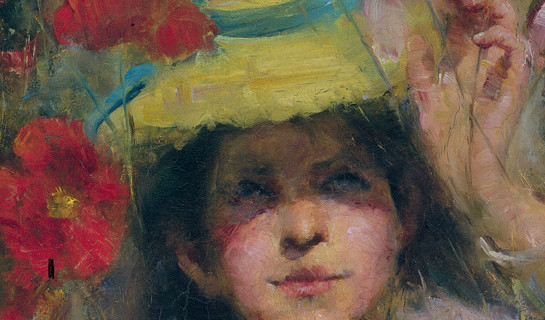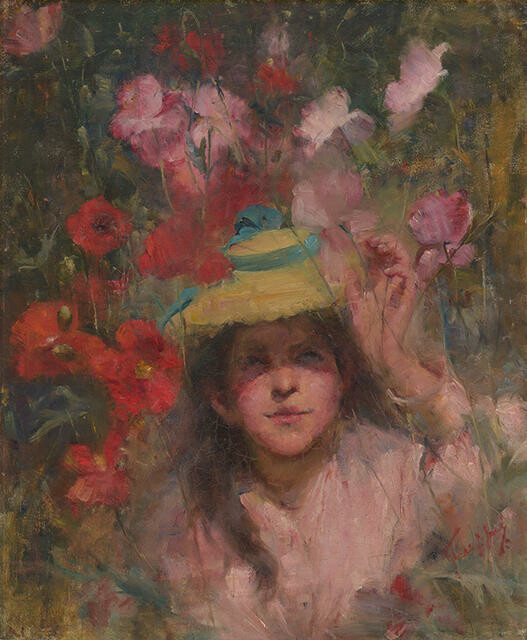Grace Joel
Aotearoa New Zealand, b.1865, d.1924
A Rose ’midst Poppies
- 1895
- Oil on canvas
- Purchased, 1966
- 760 x 660 x 65mm
- 69/530
Tags: flowers (plants), gardens (open spaces), girls, hats, people (agents), portraits, sunlight, youth
Dunedin-born artist Grace Joel painted A Rose ‘midst Poppies in 1895, the year after returning from Melbourne, where she’d studied from 1888 at the National Gallery School under Frederick McCubbin. This light-filled, summery composition also reflects the influence of her second cousin E. Phillips Fox, a leading Australian painter who had studied in France and, after establishing his Melbourne Art School in 1892, promoted the fully developed French impressionist technique employed here to lively effect by Joel. Grace Joel taught painting and drawing in Dunedin before leaving New Zealand in 1899 to study in Paris at the Académie Julian. She settled permanently in London in 1901, achieving steady critical acclaim for her portraits of women and children, which were shown in London, Paris and Edinburgh over the next two decades. Her career successes would be claimed by both Australia and New Zealand.
(The Weight of Sunlight, 16 September 2017 - 16 September 2018)
Exhibition History
Brought to light, November 2009- 22 February 2011
Joel travelled to Melbourne in 1891, where she studied under Australian impressionist Frederick McCubbin. That also happened to be the same year in which the Heidelberg School (in which McCubbin, Charles Conder, Tom Roberts and Arthur Streeton were leading members) was formed in Melbourne. The influence of these artists and their interest in impressionism is highly evident in ‘A Rose ‘midst Poppies’, with Joel using broad, rapid brushwork and bright vibrant colours to convey the atmospheric effect of sunlight upon the scene.
Grace Joel’s A Rose midst Poppies conveys an idyllic subject, combining the beautiful young face with the vibrant red poppies. While the painting has Symbolist overtones, there is also an Impressionist influence in the soft and hazy effect without any strong outlines. The combination of flowers and a figure study was popular among British artists during the 1880s and 1890s. Born in Dunedin, Joel was the daughter of a prosperous brewery owner, and was a woman of some financial independence. She was taught by Girolamo Nerli (1860 -1926) in Dunedin before studying at the National Gallery School, Melbourne from 1891 to 1894. On her return to Dunedin in 1895 Joel opened a studio, but the local art scene was limited so, in 1900, she left for Europe. She enrolled at the Académie Julian in Paris and in 1905 studied with the ageing Pierre Auguste Renoir (1841 -1919). Joel exhibited at the Royal Academy in 1908, 1915 and 1920 and at the Paris Salon and the Royal Scottish Academy. She died in London. (Opening Gallery hang, 2003)
The painter of this work began her training in Otago while she was already a working member of the Otago Art Society. In 1891 she moved to Melbourne to continue her studies. On her return to Dunedin in 1895 she opened a studio and commenced teaching but what was considered an avant-garde approach did little to advance her popularity as painter.
This work dates from that time. In treatment it shows strongly the influence of the ‘Melbourne School’ of the 1890s. The subject is imbued with late Victorian symbolism. The innocence of girlhood and maidenly charm about to pick a bloom in the summer sun. The first hint of awakening yet to come.
As with many of her contemporaries Grace Joel found a need for travel and in 1899 left New Zealand for Europe. Apart from a brief return in 1906, she remained an expatriate, living in London where she gained some recognition as a portrait painter. (Label date unknown, before 2002)
